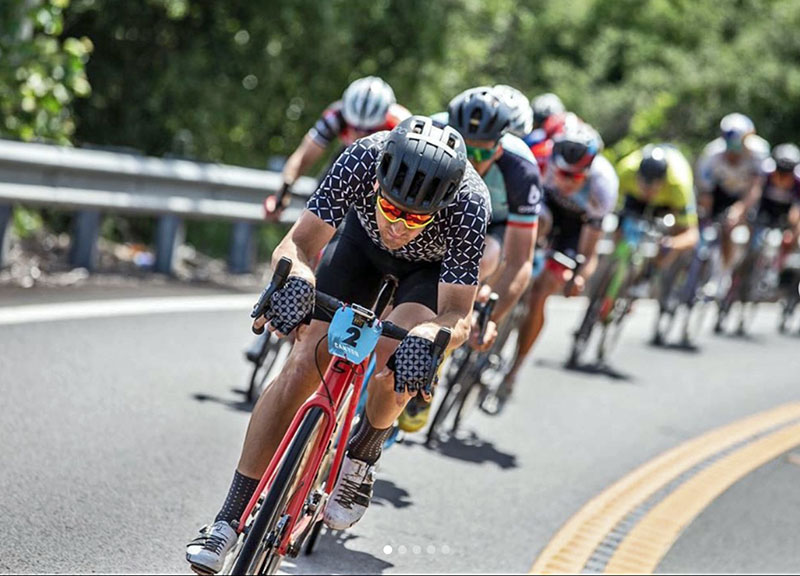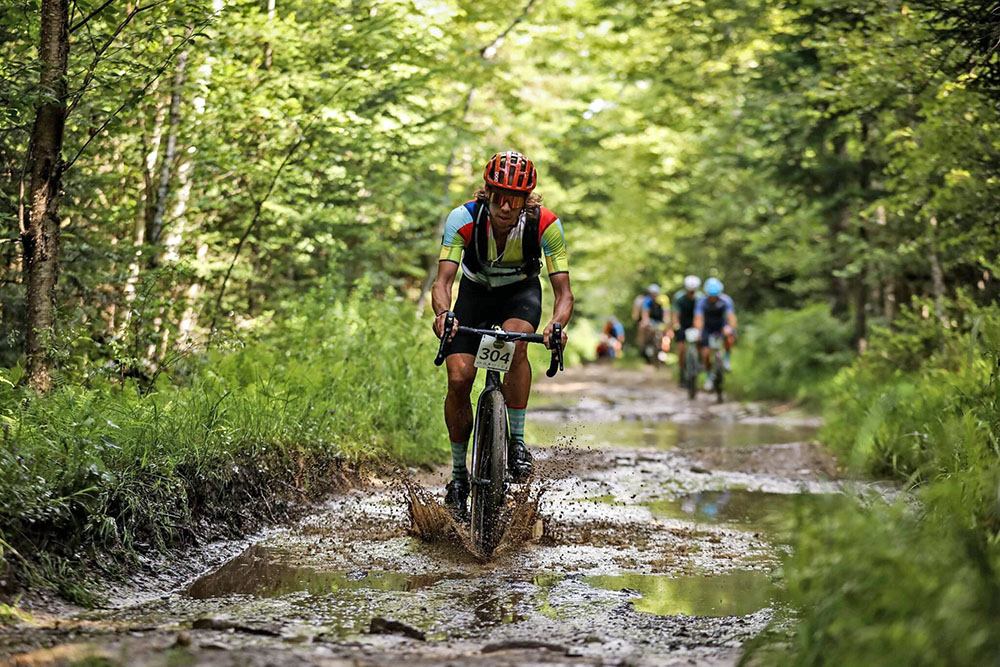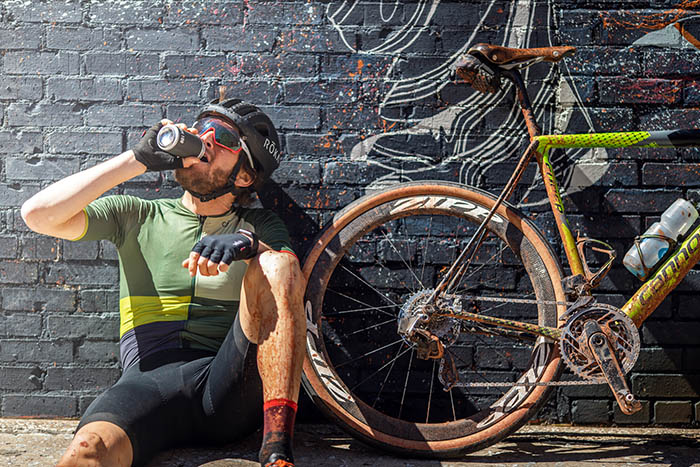Ted King’s Tips for Choosing Gravel Tires

Editor’s Note: ‘Gravel’ means different things in different regions, from the smooth dirt roads of Vermont to the Flint Hills of Kansas. Few riders have as much experience riding and racing all over the world as Ted King. Here is how the ‘King of Gravel’ chooses his tires.
It’s only in the relatively recent rearview mirror that we see cyclists steering their frankenbikes off the beaten path. “Gravel” as a name wasn’t a genre of riding yet; this was merely riding a bike on pavement and then riding a bike off pavement. Most riders were on two-wheeled amalgamated collections of misfit parts, trying to create what did not yet exist: Riders took the best parts of road and mountain bikes and combined them in a single bike. That was the start of “gravel” as we know it, and it’s quickly becoming something of a rarity in this day and age.
With the burgeoning support of the entire cycling industry behind gravel, and with a hyper-focus on components designed specifically for every style of gravel riding, my inbox is continually filled with questions about my choice for bike parts. Specifically, questions revolving around where the rubber meets the (off) road are the most common. So in an attempt to take a proactive approach, I’m excited to offer Ted’s Tips for Choosing Tires.

I’ll tackle the full suite of options, so let’s begin on the road. Here’s some context: I raced as a professional road cyclist for a decade from 2006-2015. The start of that era was a time when 25-tooth cassettes were used in the off-season, and 23 teeth were the norm once fitness came around. Meanwhile tire widths ranged from 21 to 23 mm. By the time I retired, mid-compact chainrings were just starting to catch on. I was a rarity to request a 32 tooth cassette for extended high-altitude climbing, and road tires would occasionally bloom to 26 mm. During the spring classics, we would ride 32-spoked wheels and splurge on plush 28 mm sew-ups that had been aging in a dingy Italian basement just perfectly like a fine wine. Modern gravel bikes glide over cobbles compared to the jackhammer rides from generations ago.
Since retiring from the ProTour circus, I’ve never ridden a tire narrower than a 28 mm. Cannondale has been foresightful in offering wide tires on road bikes years before many other manufacturers. So when I want to test myself on the local group rides or just feel pure speed, even on the fastest, most aero road bikes, I’m riding the 32 mm Rene Herse Stampede Pass. If you still subscribe to a generation past and are just graduating to wider tires, the 28 mm Chinook Pass is terrific ‘gateway rubber.’ Try them, love them, you can thank me later.
Now looking at all tires, on road and off, there are a few tenets to which I subscribe. My general rules of thumb are: Wider is better. If it’s technical then I opt for knobs. Tubeless is your friend. And you’re faster not changing a flat than changing a flat. Let’s dive into those.
Width
When in doubt, go wider. Gone are the days of jacking tire pressure to 120 and bouncing on down the road. With more rubber beneath you and thanks to extensive studies, wider tires and lower pressures are actually faster than their opposite. What’s more, the tires deflect over undulating terrain which adds a pleasant cush to your ride, and you’re therefore not sore for days from a particularly bumpy outing. Perhaps best yet, a wider tire provides more traction on dirt and gravel, without compromising speed. So while you may look around at a start line and see knobby tires galore on tame terrain, you’ll immediately be at an advantage on fast-rolling slicks.

Looking at specific events, this rule of thumb sees me on a 35 mm tire at the Belgian Waffle Ride, a decidedly “roadie” gravel race with loads of pavement, but with sandy and stone-riddled sections throughout. Whereas most of the competition is on 30-32 mm tires, I was pleased as punch with my Bon Jon Pass.

Jumping to the opposite corner of the country, let’s take a look at my home roads and Rooted Vermont. This is a bit of a tire tossup since it’s largely well-maintained, smooth gravel roads. However, there are a few short, technical rocky sections that make you think twice. My advice here is as narrow as the 32 mm Stampede Pass if you think you can make up the speed before and after Vermont’s unmaintained class IV roads. Or if you’re ready to let it all hang out, then size up to a 38 mm Steilacoom or Barlow Pass since they’re both still quick on the smooth stuff, but can handle those techy bits more easily.

In the 2019 LandRun (now MidSouth), most riders were on knobby 35 mm tires, whereas I opted for the slick 44 mm Snoqualmie Pass. The course was devoid of rough terrain, so the plush choice put me happily into second place.

My best results of last year was SBTGRVL, where I again went with 35 mm Bon Jons, when most of the competition was on 32-35 mm with considerable knobs. The fast-rolling tire was the perfect set of rubber for victory. Now you might say, why not run 44 or 48 mm tires, which I actually do quite often and with a great bit of pleasure. My personal preference is to take a gauge at most people are doing and then use “the next size up.”

Knobs
Whereas other tire manufacturers have dozens of tread patterns resulting in a mind-numbing decision over minutia of where the knobs are placed, Rene Herse makes the choice simple. Their knobby tires all have virtually the same tread pattern, which rolls magnificently fast. The center knob is a fast-rolling straight pattern, and the shoulder knobs link up with the ground incredibly well, making them opportune when added grip is necessary. Therein lies the key: when added grip is necessary.
Here in Vermont, the knobs roll as well on snow-covered terra firma as they do on mud, damp leaves, or hard-packed gravel roads. It’s actually a nearly perfect place to test tires, since there is so much variety. I was first introduced to the 38 mm Steilacoom tires, which have been nothing but successful for me. However, subscribing to rule number one, the 42 mm Hurricane Ridges are more and more my preferred tire. The Rift in Iceland was like racing across the moon with a seemingly endless variety of terrain, and Hurricane Ridge was the go-to there.
Tubeless
There are few things that have made off-road riding more enjoyable than tubeless technology. In the words of skiing pioneer Warren Miller: “If you don’t do it this year, you’ll just be one year older when you do.” Lower pressures, more comfortable rides, and less time fumbling with tubes fixing a flat on the side of the road: Tubeless technology sells itself.

Casings
Perhaps the biggest decision is the tire casing, with Rene Herse offering up to four versions: Extralight, Standard, Endurance, and Endurance Plus. I’m a 6’2” (188 cm) rider and weigh in around 180 lb (82 kg). I know how to put my equipment through the wringer over 100-200 miles. I have faith in each of these casings, and I find I use the entire range based on conditions.
For the pure feel of the ground beneath you, there’s nothing better than an Extralight. When competition comes around, and we’re looking at a tire with only the first two casing options, I tend to opt for Standard, just for the added durability. When the gravel roads turn rough and sharp, you’ll likely find me on an Endurance tire. Then for the most burly events and when competition is on the line, where flint rock can cut a tire like a knife through butter, I’ll choose the Endurance Plus for peace of mind.
And with that, I wish you success in choosing your tires. Whether on your frankenbike or a brand-new spiffy gravel steed, I’ll see you out on the off-road!
Photo credits: All images by Ansel Dickey, except Wil Matthews (Photo 3), Rooted Vermont (Photo 4), SBTGRVL (Photo 6).


